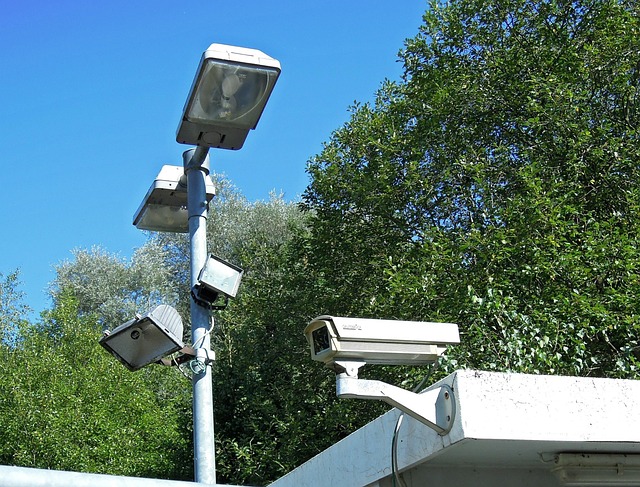Drone-assisted real-time video surveillance revolutionizes large-scale monitoring with detailed aerial footage, reaching inaccessible areas. This technology offers continuous coverage, enhances situational awareness, and enables quick responses to anomalies, especially in remote locations where traditional methods struggle. However, ethical considerations, including data protection and transparent communication, are crucial to balance public safety and privacy as drone surveillance becomes more widespread.
Drone-assisted surveillance is transforming large-scale monitoring, offering unprecedented capabilities in both reach and efficiency. This article delves into the potential of drone surveillance technology, exploring how real-time video feeds enhance monitoring efforts across vast areas. We discuss challenges and innovative solutions for large-scale operations while addressing ethical considerations that come with this burgeoning field. By harnessing drone capabilities, organizations can achieve new levels of situational awareness through robust real-time video surveillance.
Unlocking Potential: Drone Surveillance Technology
Drone-assisted surveillance technology is revolutionizing large-scale monitoring by offering unprecedented capabilities in real-time video surveillance. These unmanned aerial vehicles (UAVs) provide a dynamic and versatile platform for capturing detailed aerial footage, reaching areas that are often inaccessible or difficult to monitor using traditional methods. With their high-resolution cameras, thermal imaging capabilities, and advanced sensors, drones can detect and track various activities, from environmental changes to suspicious behavior.
The potential of drone surveillance is immense, particularly in vast landscapes, urban areas, and remote locations. By utilizing live streaming and data analytics, security teams can quickly respond to emerging issues, enhancing overall situational awareness. Moreover, real-time video surveillance enabled by drones allows for continuous monitoring, ensuring no critical detail goes unnoticed or unreported. This technology promises to transform how we approach large-scale surveillance, making it more efficient, comprehensive, and adaptable to evolving needs.
Real-Time Video: Enhancing Monitoring Efficiency
Drone-assisted surveillance systems equipped with real-time video capabilities significantly enhance monitoring efficiency on a large scale. The ability to transmit live feeds from aerial perspectives offers a comprehensive view, allowing operators to detect and respond to anomalies or potential issues promptly. This technology is particularly useful in vast or remote areas where traditional monitoring methods may struggle to provide continuous coverage.
Real-time video surveillance enables quick decision-making processes by providing up-to-date information. Drones can cover extensive territories, capturing high-resolution footage that aids in identifying details crucial for effective monitoring. This technology revolutionizes how we oversee and protect large-scale operations, events, or critical infrastructure, ensuring optimal efficiency and safety.
Large-Scale Operations: Challenges and Solutions
Large-scale operations present unique challenges for traditional surveillance methods, demanding efficient and comprehensive solutions. One significant hurdle is the vast area that needs monitoring, often involving remote or hard-to-reach locations. Here, drone-assisted surveillance emerges as a powerful tool. These unmanned aerial vehicles (UAVs) can swiftly cover extensive territories, providing detailed real-time video surveillance. Equipped with high-resolution cameras and advanced sensors, drones offer a bird’s-eye view, capturing critical data that might go unnoticed from ground level.
Moreover, drones can operate in challenging conditions, including rugged terrain and adverse weather, without compromising performance. They enable continuous monitoring, allowing security personnel to detect and respond swiftly to any anomalies. Real-time video surveillance via drones enhances situational awareness, facilitates faster incident management, and significantly boosts the overall efficiency of large-scale operations.
Ethical Considerations for Drone Monitoring
As drone-assisted surveillance becomes increasingly accessible and integrated into large-scale monitoring practices, it’s crucial to navigate a complex landscape of ethical considerations. The ability to capture real-time video surveillance from the sky raises significant privacy concerns. Balancing public safety with individual rights requires stringent protocols and oversight mechanisms. Each drone operation must adhere to strict data protection regulations, ensuring that collected information is securely stored, accessed only by authorized personnel, and used exclusively for its intended monitoring purposes.
Additionally, transparency and accountability are paramount. Citizens should be made aware of ongoing drone surveillance operations within their communities, with clear communication about the scope and duration. Mechanisms for challenging or reporting potential misuse or breaches of privacy must be readily accessible. These measures are essential to foster public trust and prevent the normalization of unmanned aerial vehicle (UAV) monitoring as a means of unbridled intrusion into personal spaces.
Drone-assisted surveillance offers a promising solution for large-scale monitoring, with real-time video capabilities revolutionizing traditional methods. While challenges exist in terms of integration and ethical concerns, these can be addressed through thoughtful planning and regulatory frameworks. By leveraging drone technology, we can enhance our ability to protect and manage vast areas, ensuring a safer and more efficient future for large-scale operations. Real-time video surveillance becomes not just a possibility but an essential tool in our arsenal.
